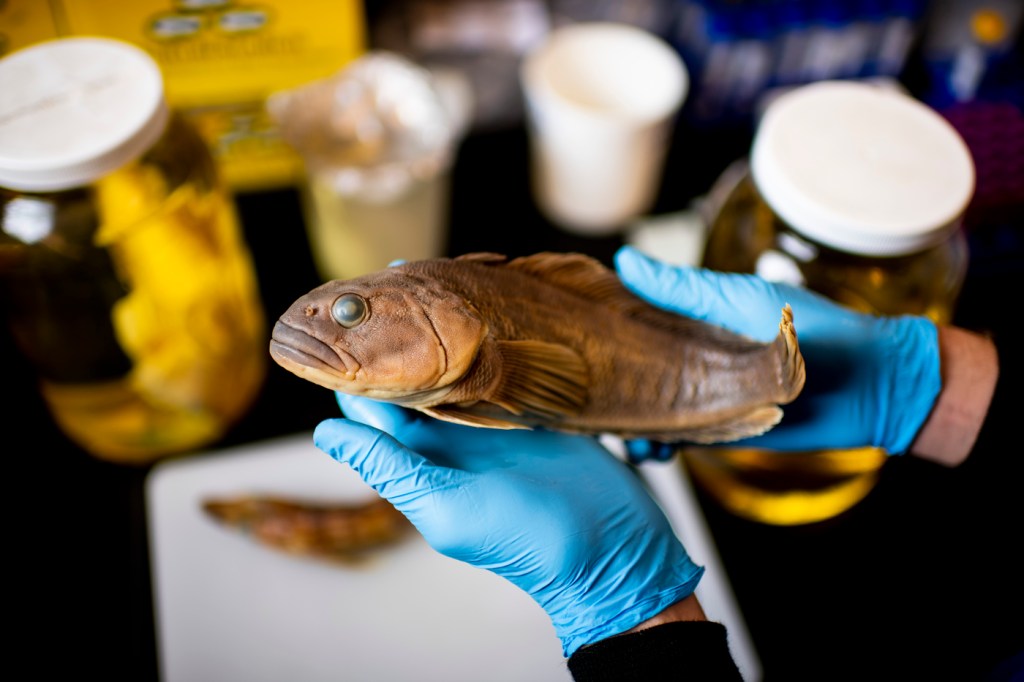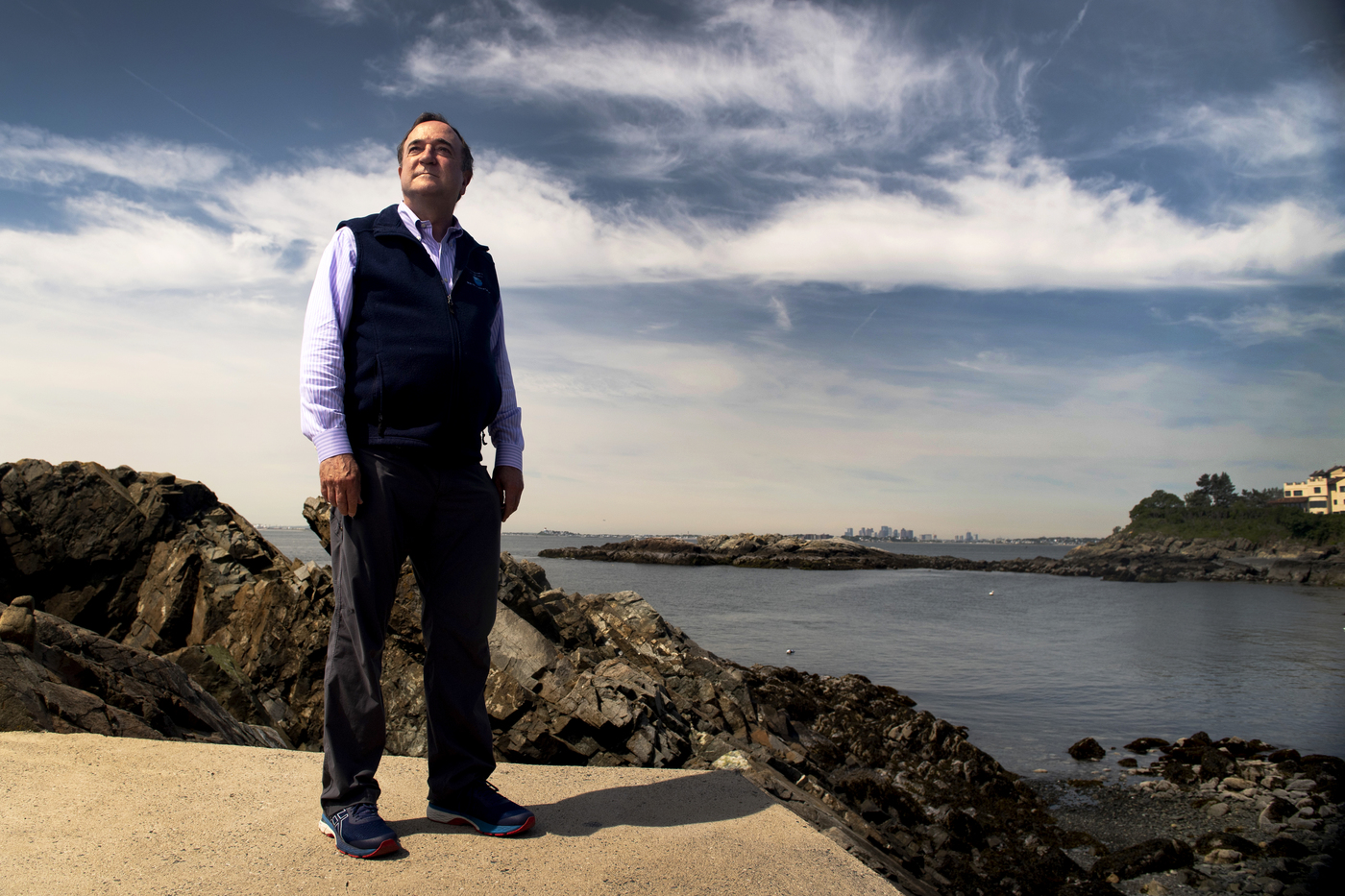How Bill Detrich’s foresight led to the DNA sequencing of a rare icefish species

The year was 2004. William Detrich was leading a research cruise to study fish that live on the frigid cusp of Antarctic waters.
On that scientific expedition, Detrich, a professor of marine and environmental sciences at Northeastern, did something in anticipation of future science. Each time Detrich’s international team of scientists caught a fish, they would draw a sample of blood, purify the blood cells, and extract the DNA. That genetic material would then be preserved in a solution to be studied at a later date.
Just how much later that DNA would be sequenced, Detrich didn’t know. But the human genome had been sequenced a year earlier, and the threat of climate change was looming over ocean researchers, prompting them to scramble to study the creatures on the fringe before those species blinked out of existence.
“We had to prepare for the future,” he says. Scientists like Detrich see creatures that survive in extreme environments as important for understanding biology’s capacity for adaptation, particularly as our planet undergoes dramatic changes. Detrich wanted to make sure to gather the genetic material of the fish swimming around Antarctic and subantarctic waters before it was too late, even if nobody was going to sequence that DNA just yet.
So the fish DNA samples sat in bottles in the back of Detrich’s refrigerator, preserved at those cool temperatures, waiting. And waiting. And waiting. For nearly 15 long years.

Then, in 2018, scientists at the British Antarctic Survey reached out to Detrich, knowing that he had these samples. It was time for the cold water fish genomes to be sequenced. Detrich shared the DNA samples stored in his refrigerator with colleagues at the Wellcome Sanger Institute in the United Kingdom who would do the sequencing.
“I had an idea that was a little ahead of its time,” Detrich says. “But the future’s here. The future is now.”
Detrich’s foresight came to fruition last week when the complete genome of the channel bull blenny, Cottoperca gobio, a subantarctic fish that inhabits the cold waters surrounding Tierra del Fuego and the Falkland Islands was published in the journal Nature. Its sequencing was part of the Vertebrate Genomes Project, an international collaboration to sequence complete reference genomes for each of the more than 71,000 known living vertebrate species, which started in 2017. The channel bull blenny genome is one of 16 genomes fully sequenced so far, which were all reported in a collection of papers published in Nature and Nature Communications last week.
Scientists like Detrich see subantarctic fish as containing crucial clues in figuring out how the strange, hardy creatures that are Antarctic fish came to be. Antarctic fish, Detrich’s research has revealed, have unique adaptations to survive frigid waters dotted with ice. For example, he found that most Antarctic fish, produce an antifreeze in their blood.
Subantarctic fish are the closest living relatives to Antarctic fish but have never lived in truly freezing conditions themselves. So Detrich sees those fish as containing genetic snapshots of how the Antarctic fish’s ancestors might have looked.
The first question to ask, he says, is “What’s the basic genome like for a fish that hasn’t seen ice? And then if we’re going to sequence fish that live in the ice, we can compare. We can compare how the genomes differ, how the genome has evolved to support life at cold temperatures.”
The channel bull blenny genome has been sequenced so completely that it has reached what scientists call “reference status.” That means that the published genetic sequence for the fish will be the data used to study the species in its evolutionary context going forward.
That’s the broader goal of the Vertebrate Genomes Project, too. The idea is that with such complete, error-free reference genomes for all the known species of vertebrates, scientists will have a much more detailed view of the interconnected web of life on our planet.
There were more than one fish’s DNA in Detrich’s refrigerator. He also collected genetic material from more than a dozen species on that cruise. Those genomes are currently being sequenced and analyzed.
Already, the genetics of these subantarctic fish have revealed “a burst of diversity,” Detrich says, just before the Antarctic froze over. That suggests that there was quite a bit of genetic variation for natural selection to act upon as the Southern Ocean cooled and froze, he says, which set the stage for the unique characteristics of fish swimming around Antarctic waters today.
And perhaps, Detrich says, “There may be sufficient genetic diversity among Antarctic fishes, or at least some of them, to be able to adapt to future warming of the Southern Ocean. … Perhaps the fish have enough genetic diversity that at least some of them will be able to adapt to the conditions of a future warming ocean.”
For media inquiries, please contact Marirose Sartoretto at m.sartoretto@northeastern.edu or 617-373-5718.





